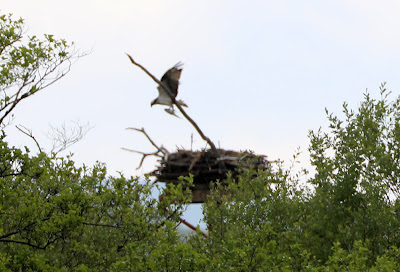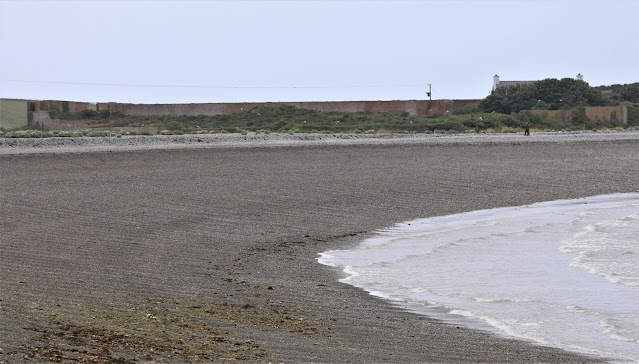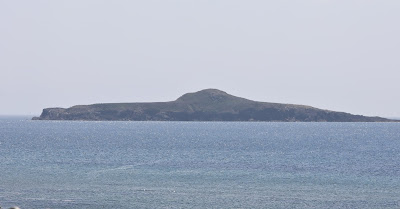Moths and Ospreys
Sunday, June 20, 2021
Cae Glas in Pwllheli, on the Lleyn peninsula in North Wales was booked for 2020 - before Covid 19. We made the decision to defer it to this year, retaining all the money paid. Not ideally situated for our birding and mothing needs, our requirements are such that they leave very little choice of accommodation. Single storey with a walk-in shower, and a good garden, are the basics. Here we have all that.
The bungalow has three bedrooms, one en suite, one with a large bathroom attached. Ideal. Despite being overlooked, we put a moth trap out last night, in as good a situation as was possible. If curtains are closed, the light is too far away to disturb.
Opening the trap is always a Christmas morning occasion, enhanced by a new location. The best of this morning's 30+ species (some yet to be ID'd), were:
Scarlet Tiger
Shark
Common Emerald and
two micros. Lozotaenia forsterana and
Hypochalcia ahenella
That made it a late morning start for Glaslyn Osprey nest. Less than 20 miles away.
When the RSPB’s stewardship of the Glaslyn ospreys came to an end in 2013 a group of interested wildlife enthusiasts agreed to take over the reins and run the project at a local level.
Consequently in 2013 Bywyd Gwyllt Glaslyn Wildlife (BGGW) was set up as a community interest company with the aim of continuing the work of protecting breeding ospreys in the Glaslyn Valley, whilst at the same time highlighting the wealth of other wildlife in the region.
In a very short time a great deal has been achieved and the company continues to grow.
In 2014 work began on the construction of our new visitor centre at Pont Croesor. This was completed and the centre was opened by Iolo Williams on 31st July 2015.
After
the usual Covid restrictions - telephone number, hand sanitising etc,
we walked a short distance from the centre, and the disabled parking
area, to a small patch of mown meadow, backed by the river Glaslyn,
looking over an unmown richness of wild flowers to the Osprey nest, 300
metres away. Rather distant for photography, on a pleasant day with a fair amount of sunshine, much cloud - and a chilly northerly breeze. The photo below is heavily cropped from a 400 m lens product. The female's head can be seen at the bottom of the perch.
We sat for well over an hour, during which time the male returned with a large fish - I first picked him up high above, spiralling ever lower before disappearing. The male usually eats the head before delivering his prize to the nest. When he did return, he claimed his reward by mating vigorously before leaping onto the nest perch to preen. After about 20 minutes, he flew away again, shortly followed by the female. Their first chicks died, at least one of the second brood has hatched, she shouldn't leave them for long. The male is a five years old bird hatched at the Dyfi nest.
We loved the experience.
After a look at another couple of local wildlife hot-spots, many people about to-day, we returned to watch Wales hold mighty Italy to a 1-0 win. Wales should still go through to the next round.













Comments
Post a Comment